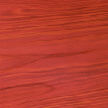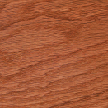Wood Characteristics
Lewis Lumber Products carries a variety of Hardwood and Softwood species, and many types of Exotics.
Listed below you will find a photograph, common characteristics, and common uses of the most popular lumber varieties that we stock. We also carry Bush Oil and Penofin. These products can be used on a variety of our wood products to protect the wood and bring out the natural wood characteristics. Please contact us for more information on price and other species availability.
|
Aromatic Cedar |
Color: Mostly red heart wood, thin whitish sapwood Density: Hard texture Grain: fine grain, very knotty-grain varies around knot Machinability: Good |
Finishing: We suggest using oil finishes that display natural colors. Distinctive Characteristics: Highly aromatic, natural resistance to insect damage, usually only available in 1” thickness |
Common Uses: Cedar chests, closet interiors, furniture interiors Other Names: Aromatic Red Cedar, Eastern Red Cedar |
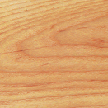 Ash |
Color: Creamy white to light brown heartwood, light sapwood Density: Very hard, excellent shock resistance Grain: Distinctive wide-open grain, has occasional brown streaks Machinability: Very good |
Finishing: Takes all finishes well, pigmented stains will bring out the grain nicely. Distinctive Characteristics: Excellent Oak substitute, “Golden Oak” |
Common Uses: Furniture, mouldings, flooring, baseball bats Other Names: White Ash, Brown Ash, Green Ash |
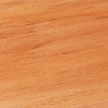 Basswood |
Color: Cream to beige color Density: Very soft texture, like pine, very light in weight, weak strength properties Grain: Fine, tight grain, non distinctive Machinability: Excellent |
Finishing: Soaks up finish, dark stains will show very dark, light stains will bring out grain. Distinctive Characteristics: Light weight, cheaply priced substitute for darker woods (Cherry, Walnut, Mahogany) when stained, dimensionally stable after proper drying |
Common Uses: Moulding, carving, wood Venetian blinds, core stock for doors and plywoods Other Names: Linden |
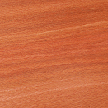 Beech |
Color: Pink to reddish brown heartwood, sapwood is creamy to pink Density: Very hard, heavy in weight, excellent shock resistance Grain: Moderate tight, fine grain with evident flecking at times Machinability: Machines well at slow speeds, pre drill for nailing and screws |
Finishing: Should take a finish well. Distinctive Characteristics: Very hard, cheaply priced substitute for Oak, Ash,, Hickory, does not impart taste or odor, usually only available in 1”. Very hard to kiln dry properly. |
Common Uses: Chair parts, furniture, flooring, food containers, toys, woodenware |
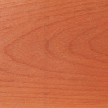 Birch |
Color: Cinnamon, light reddish brown to pink heartwood, sapwood is creamy-white to yellowish Density: Hard, medium weight Grain: Uniform, fine grain, small pores Machinability: Generally good, some swirled grain will chip out if tooling is not sharp |
Finishing: Takes finish very well. Distinctive Characteristics: Very durable and strong |
Common Uses: Cabinets, seating, millwork, furniture, interior doors Other Names: Our Birch is the specie “Yellow Birch.” There are other Birches (paper, white, or gray). |
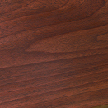 Black Walnut |
Color: Brown to deep purple brown heartwood, sap is brilliant white to cream color-gray Density: Fairly light weight, medium texture Grain: Moderately open grain Machinability: Excellent machining characteristics, turns, sands, and carves well |
Finishing: Unsurpassed in finishing! Clear finishes and oils will bring out satiny grain. Distinctive Characteristics: The dark heartwood makes this very distinctive. Try using pieces with sap mixed with heart. |
Common Uses: High end furniture, carving, flooring accents, musical instruments, gun stocks Other Names: American Black Walnut |
 Butternut |
Color: Tan to brown Density: Light in weight, not as strong as walnut Grain: Coarse grained Machinability: Will machine easily, but has tendency to fuzz up at times |
Finishing: Will take finish well, use a sanding sealer. Distinctive Characteristics: Color and soft texture make this an interesting wood, not always readily available in thicker sizes. |
Common Uses: Carvings, some furniture, cabinets, excellent wall paneling Other Names: White Walnut, Oil Nut |
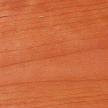 Cherry |
Color: Red to deep reddish brown heartwood, white to yellowish sapwood Density: Medium weight, moderately hard, stiff and strong Grain: Fine, closed grain Machinability: Excellent |
Finishing: Takes a finish well, however light to natural finishes are recommended. Distinctive Characteristics: Beautiful markings (gum streaks, pin knots sometimes) and red color will darken to a rich reddish brown with age. |
Common Uses: High end furniture, cabinets, interior millwork, musical instruments, paneling, flooring Other Names: American Black Cherry, Choke Cherry, Rum Cherry, Whiskey Cherry, Wild Cherry Available in Certified: Check for availability |
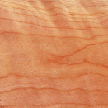 Curly Cherry |
Color: Red to deep reddish brown heartwood, white to yellowish sapwood Density: Medium weight, moderately hard, stiff and strong Grain: Wavy patterns running perpendicular to the normal grain orientation Machinability: Machine slowly to avoid chip out of grain |
Finishing: Dark finishes will vary depending on grain orientation of curl (light to dark absorption). Distinctive Characteristics: This curl is generally not as pronounced as Curly Maple. |
Common Uses: High end and period piece furniture, cabinets, interior millwork, musical instruments, paneling, flooring Other Names: Flame Cherry |
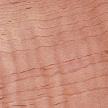 Curly Maple |
Color: Creamy white to grayish white sapwood, heartwood can be brown to greenish brown with some mineral streaks. Density: Moderately hard and strong, not quite as strong as Hard Maple. Grain: Light to very heavy patterns running perpendicular to normal grain orientation Machinability: Machine slowly to avoid grain chips |
Finishing: Dark finishes will vary depending on grain orientation of curl (light to dark absorption). Distinctive Characteristics: This curl is generally very apparent. The intensity may vary from board to board. |
Common Uses: Specialty furniture (Shaker and Mission styles), striking trim, flooring and paneling Other Names: Flame, Fiddle Back, Tiger Strip (usually denoting the intensity of the pattern) |
|
White Oak |
Color: Light tan to brown heartwood, sapwood, sapwood is creamy white to gray Density: Very hard, shock resistant, and very dense, heavy Grain: Moderately open grain on plain sawn, Quartered and Rift is straight grain Machinability: Fairly well, can be tough on tooling |
Finishing: Takes a finish well. Distinctive Characteristics: Highly resistant to the environment, very hard, may be a bit more color consistent than Red Oak. Quartered and Rift sawn have a striking grain appearance. |
Common Uses: Barrels, buckets, tool handles, furniture (especially Quartered or Rift grain) Other Names: Many individual species of Oak fall into the White Oak category. |
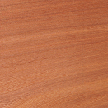 Elm |
Color: Brown to dark brown, sometimes reddish heartwood Density: Moderately hard and heavy wood Grain: Mostly coarse open grain Machinability: Machines fairly well, can be abrasive to tooling at times |
Finishing: Takes finish well. We suggest using a sanding sealer. Distinctive Characteristics: Has been used as a Chestnut substitute, good bending quality |
Common Uses: Bent chair backs, some furniture, flooring, paneling, some cabinets Other Names: Red Elm, Slippery Elm, American Elm (Gray Elm) has a gray-white color with a slightly tighter and more closed grain. |
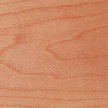 Hard Maple |
Color: Creamy white to off white sapwood-tinged occasionally with slight red brown heartwood Density: Hard, heavy and strong, very resistant to shock and abrasive wear Grain: Closed grain, uniform texture. Some of the figured Hard Maple is available (Curly, Birdseye, and Quilted) Machinability:Excellent, will tear out with dull tooling |
Finishing: Finishes very well. Some of the figured woods will show variable levels of penetration. Distinctive Characteristics: Great wood for applications requiring hardness. Birdseye and curly patterns are available. |
Common Uses: Furniture, handles, cabinets, woodenware, flooring, paneling, millwork and mouldings Other Names: Sugar Maple, Black Maple, Norway Maple, Rock Maple Available in Certified: Check for availability |
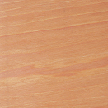 Hickory |
Color: Tan to reddish brown heartwood, cream to yellowish sapwood (variable mixture of heart and sap) Density: Very hard, strong, stiff and heavy Grain: Moderately coarse open grain Machinability: Excellent machinability, but very abrasive on tooling |
Finishing: Will take stains. Distinctive Characteristics: The combination of its hardness, strength, toughness, and stiffness are unmatched by any other hardwood. |
Common Uses: Cabinets, flooring, tool handles, paneling Other Names: Includes seven species (5 are true Hickories and 2 are Pecan Hickories) |
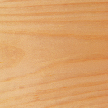 Eastern White Pine |
Color: Sapwood is yellowish white to cream colored, heartwood is reddish brown to creamy tan Density: Soft and very lightweight Grain: Mixed broad to tight grain with significant difference between winter wood and summer wood (growth rings). Machinability: Excellent |
Finishing: Takes a stain and paint very well. Distinctive Characteristics: One of the few softwoods produced like hardwood lumber (random width and length), it has been often called “God’s gift to the woodworker” due to its diverse properties and uses. |
Common Uses: Exterior millwork, furniture, mouldings, paneling, carvings, turning, pattern making Other Names: White Pine |
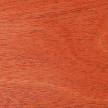 Mahogany |
Color: Blood red to reddish brown, sometimes lighter in color with pale red to grayish tinge Density: Medium texture, moderately heavy Grain: Fine grain with interlocking parallel runs at times (ribbon) Machinability: Excellent |
Finishing: Takes stain well, will soak it up quite a bit. We suggest using sanding sealer. Distinctive Characteristics: Has long been a premier choice for high end furniture and millwork. Usually the grade is excellent and average width is wider than most domestic hardwoods. Excellent exterior uses. |
Common Uses: High end furniture, interior millwork, exterior doors, windows, and trim Other Names: Honduras Mahogany, Genuine Mahogany (African Mahogany is genuine also), South American Mahogany |
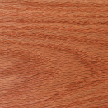 Red Oak |
Color: Pinkish red to blonde in color Density: Very hard and strong Grain: Openly porous and with dramatic grain patterns. Like White Oak, it is offered in Quartered and Rift grains also. Machinability: Excellent |
Finishing: Due to porous nature it will soak up stains but also offers a wide variety of finish tones. Distinctive Characteristics: This is probably the most popular hardwood used in modern woodworking. Broad grains give this a pronounced appearance. |
Common Uses: Furniture, cabinets, moulding, trim, flooring, paneling, turning Other Names: Encompasses many individual species: Northern Red, Southern Red, Black, Shumard, Cherrybark, Scarlet, Pin Available in Certified: Check for availability |
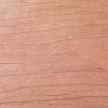 Soft Maple |
Color: Creamy white to grayish white sapwood, heartwood can be brown to greenish brown with some mineral streaks. Density: Moderately hard and strong, not quite as strong as Hard Maple Grain: Fine, tight closed grain, some flecking evident Machinability: Excellent |
Finishing: Finishes well and also takes a stain very well. Distinctive Characteristics: The name “Soft Maple” is misleading. This is a very reasonably priced hardwood that is often substituted for Hard Maple in moulding, trim, furniture applications due to price. It can be stained to look like other woods (Cherry, Birch, and Hard Maple). |
Common Uses: Furniture, cabinets, moulding, trim, flooring, paneling, chair parts Other Names: Red Maple, Maple Available in Certified: Check for availability. |
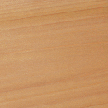 Yellow Poplar |
Color: White to yellowish cast sapwood, heartwood is straw brown to green with occasional purple mineral streaks Density: Light weight, but moderately stiff with good strength-but low in shock resistance Grain: Relatively straight grained, closed Machinability: Very good Yellow |
Finishing: Holds paint well, dark stains are preferred over light ones due to the heartwood repelling absorption to some degree. Distinctive Characteristics: Widely used because it is cheaply priced and very diverse. |
Common Uses: Interior trim, mouldings, paneling, furniture interior parts Other Names: Tulipwood, Tuliptree, Tulip Poplar, Yellow Poplar, Old |
Not sure which grade to select when shopping for wood?
WOOD |
|
|---|---|
| Wood Humidity | Wood is a hygrospic material. That means it is porous and accepts and gives off moisture depending on the environment of it’s installation. Wood products are best suited in a relative humidity level of 45%. Different parts of the U.S. or world will have different humidity levels throughout the year. Our lumber is shipped at 6-9% moisture content. You are advised to allow any wood product time to acclimate to it’s environment. A minimum of 2-3 weeks is the recommended time |
LUMBER |
|
|
Grade A: FAS / F1F Select and Better |
This is the highest quality of hardwood lumber. This will yield long, clear pieces with very little waste. |
|
Grade B #1 Common |
A Great value for the woodworker looking to get several 2’-3’ long wide cuts, or longer narrow cuts in a board. |
|
Grade C #2 Common |
This grade of lumber is good for the woodworker looking to use the natural characteristics (knots, worm holes, discoloration) or looking for 1’-2’ long cuts. Good for small crafts, interior furniture parts. |

